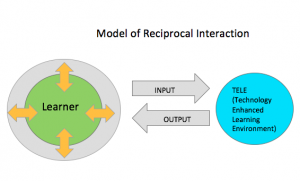Upon initially exploring the video-based anchored instructional tool entitled The Jasper Woodbury Problem Solving Series, skepticism on the necessity and the effectiveness of this resource as an enhancer of student learning through problem solving presented itself: Couldn’t effective complex problem solving exist without the use of contrived video-based scenarios? Even after recognizing the intricate seven design features highlighted in the article by the Cognition and Technology Group at Vanderbilt (1992), the effectiveness of the Jasper series wasn’t convincing. It was only through the actual viewing of video samples from the series, as well as reading through a storyboard version in the Vye, Goldman, Voss, Hmelo and Williams study (1997) that the ingenuity of this anchored instructional design tool became pronounced. CTGV (1992) defines anchored instruction as situated learning that occurs in an “engaging, problem-rich environment that allow[s] sustained exploration by students and teachers” (p.65). The Jasper Series is a problem-rich environment as problem-solving is initiated with a proposed challenge, and the proposed challenge can only be solved through a minimum of fourteen steps, thus requiring a prolonged inquiry and exploration period. In order to solve the problems, the initial problem and the problems posed along the way, the student is required to find embedded clues, pose new problems, and seek alternative solutions (CTGV, 1992). The complexity of the problem solving within the problem solving is unfounded in traditional math curriculums, ensuring that the Jasper Series is an instructional design tool worthy of consideration.
Through the ETEC 533 discussion, one posting has inspired me to move forward with the learning acquired through the Jasper series related viewings and readings. Allison Kostiuk, an elementary teacher, began designing and writing complex problems reflecting realistic and relevant narrative for her students. Kostiuk chose to complete this type of narrative by “incorporating the names of … students throughout the problems, investigating daily issues that arise for … students, and further personalizing the problem by using pictures of… students encountering the problem” (Kostiuk, 2017). This idea of designing personalized problems for students resonates with me as the thought had previously crossed my mind while working through the readings and viewings on the Jasper Series. However, I had not taken time to act upon it. Although designing complex video-based instruction is not plausible at this time, a dramatized audio story or simple dramatic retelling could be viable in presenting students with many of the similar design features as evident through the Jasper Series. Incorporated design features would include video-based or audio-based formatting to increase motivation, narrative with realistic problems, generative formatting, embedded data design, and links across the curriculum (CTGV, 1992). A designed storytelling video-based problem solving scenario is planned to be shared with students at the beginning of this upcoming month. Once completed, it will be available within this posting.
Originally, my TELE design was founded on the concept of reciprocal interaction involving direct input from the student and reciprocal output from the technology. To read the definition of my initial TELE design, please visit here: Reciprocal Interaction: A TELE Design. Through the readings, viewings, discussions, and considerations related to the Jasper Series, it has become evident that the video-based anchored learning does not fit my original TELE design. Within the Jasper Series, the technology was outputting information while the learner acted as a recipient, inputting information into the mind and then outputting learning into the surrounding environment to work towards solving problems. Following is an altered version of a reciprocal interaction design model with the option for the student to interact through input and output with the surroundings, rather than solely inputting back into the technology. Although the concept of reciprocal interaction continues to be an important feature in my TELE design, interaction with the surrounding environment is essential in bringing relevance to the learning as well as offering the opportunity for collaborative learning and reasoning.
